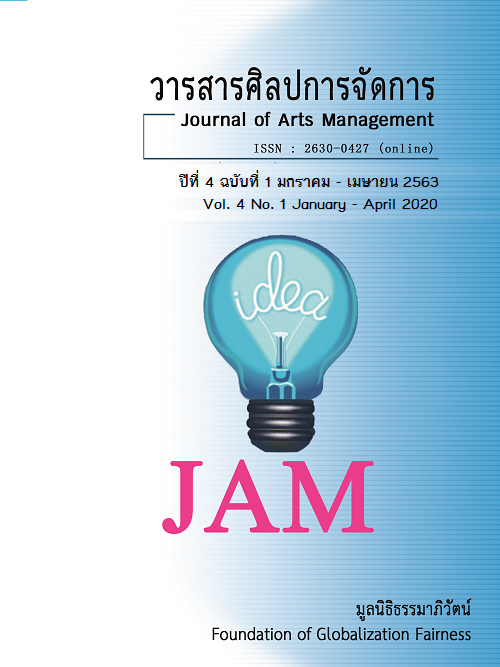Effective Factors for the Information Technology usage in Public Sector Operations: A Case Study of Department of Industrial Promotion Ministry of Industry
Main Article Content
Abstract
The purpose of this research was to compare the level of information technology utilization in the operations of personnel at the Department of Industrial Promotion. Ministry of Industry According to personal characteristics as well as to study the factors that have effected the use of information technology in the work of personnel Department of Industrial Promotion Ministry of Industry. This study was quantitative research, tools for data collection was questionnaire with closed-ended questions using statistical analysis as follow 1) descriptive statistics by using simple data analysis methods to describe data characteristics which has had simple calculations and 2) inference statics with hypothesis testing by determining decision values In the hypothesis testing at the level of 0.05, analyzed by Chi-Square to test the influence between independent variables and dependent variables as well as having the equipment inspected by 5 experts.
The result of research was found that level of information technology implementation of personnel from the Department of Industrial Promotion Ministry of industry overall, all aspects have been used at a high level and factors affecting the use of information technology in the work of personnel classified by workplace, age, position, research degree, job characteristics no relationship with the use of information technology.
Article Details
Views and opinions appearing in articles in the Journal of Arts of Management It is the responsibility of the author of the article. and does not constitute the view and responsibility of the editorial team I agree that the article is copyright of the Arts and Management Journal.
References
Boonbongkarn, J. (2004). Business environment. (5th ed.). Bangkok: Chulalongkorn University.
Case S., (2016). The Third Wave: An Entrepreneur's Vision of the Future. USA: An Imprint of Simon & Schuster.
Cook, M. F. and Gildner, S. B. (2006). Outsourcing Human Resource Functions: How, Why, When, and When not to Contract for HR Services. (2nd ed.). USA: Central Plains Book Manufacturing.
Corbett, M. F. (2004). The Outsourcing Revolution: Why it makes sense and how to do it right. New York: Kaplan Publishing.
Couto, V., Plansky, J. and Caglar, D. (2017). Fit for Growth: A Guide to Strategic Cost Cutting, Restructuring, and Renewal. NewJersey: John Wiley & Sons.
Industrial Promotion Department of Ministry of Industry. The History of Industrial Promotion Department. Retrieved February 20, 2020, from https://www.dip.go.th/th/category/ about-us/about)
Kosiyachida, S., (2004). Employment of IT System Development. Bangkok: Thankamon Printing.
Lorsuwannarat, T. (2016). e-Government. 10th edition, Bangkok: Zat Four Printing.
Petchsawang, P. (2018). Human Resource Planning Strategy. Bangkok: Chulalongkorn University.
Pinaisap, B. (2017). Human resource management. Nonthaburi: Rattanathai Printing.
Schwab, K. (2016). The Fourth Industrial Revolution. Switzerland: World Economic Forum.
Wetchayanon, N. (2016). Strategic Human Capital Management. (2nd ed.). Bangkok: The Graphic Systems Company Limited.
